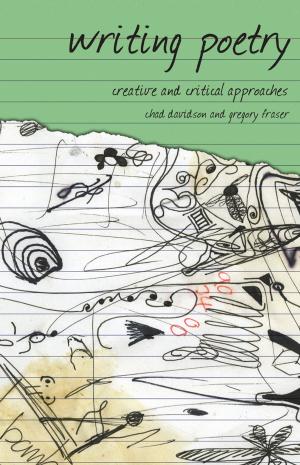| Author: | Wennermark Erik | ISBN: | 1230002517339 |
| Publisher: | ibew | Publication: | August 31, 2017 |
| Imprint: | Language: | English |
| Author: | Wennermark Erik |
| ISBN: | 1230002517339 |
| Publisher: | ibew |
| Publication: | August 31, 2017 |
| Imprint: | |
| Language: | English |
"Clarify the Truth, eliminate evil with Righteous Thoughts, save all beings, and safeguard the Fa with determination." So says Master Li Hongzhi in Falun Gong's foundational text Zhuan Falun. His sage words are valuable advice to begin the strange saga of Yu Fen, a young woman of whom we know so much, but so little; her ultimate fate remains a mystery. Could she be living peaceably in a Montreal condominium complex with counter-kitchen and rain-shower facilities, peaceably sharing a flat amongst her attractive flight attendant roommates, or has she been torched to a cinder in a fit of maniacal zealotry, an ashen corpse prone on a sprawling snow-covered Tiananmen?
In this particular tale, spanning from Beijing to NYC's Bayard Street, Yu Fen’s uncertain story intertwines in mystifying, often contradictory ways with the misadventures of confused and quixotic journalist Zhang Jie, the simple child Happy Nut, amongst other mysterious beings.
What is the "true story" of Yu Fen? Perhaps the pieces herein are enough for the diligent reader to puzzle together, should the Gong be strong within them. A word of caution however: be wary of the turgid vigor of certainty! Such overconfidence is unseemly at best, though it is amusing to hear CCP jackboots and dull-eyed true believers likewise confuse the nature of reality to such a ridiculous degree. Two sides of the coin, as they say. The Gong is as magnanimous as it is massive, and does not dwell on the incongruence of “haters.”
Falun Gong was founded in 1992 by the charismatic Master Li Hongzhi and grew rapidly throughout the 1990s until it could claim as many as 70 million practitioners in China. With great popularity came great scrutiny however, and in 1999 the Chinese Communist Party banned Falun Gong. Notice of Falun Gong came to the West in early 2001 when several members lit themselves on fire during a demonstration in Beijing's Tiananmen Square. The ritual self-immolation has been disputed as an elaborate fabrication concocted by the Chinese Communist Party to discredit its members.
The author's interest in Falun Gong came about when he was living in New York City's Chinatown and would regularly see qigong practitioners in the park. As he learned about the group, he was fascinated by their PR technique of staging mock torture scenes to protest their (authentically terrible) treatment by Chinese authorities. He saw these first hand in Washington DC, New York, and Montreal. In Hong Kong's Causeway Bay, near where he lived, Falun Gong would routinely conduct mock organ harvesting on a busy street. He also lived for a time in Northeast China not far from Yu Fen's home.
"Clarify the Truth, eliminate evil with Righteous Thoughts, save all beings, and safeguard the Fa with determination." So says Master Li Hongzhi in Falun Gong's foundational text Zhuan Falun. His sage words are valuable advice to begin the strange saga of Yu Fen, a young woman of whom we know so much, but so little; her ultimate fate remains a mystery. Could she be living peaceably in a Montreal condominium complex with counter-kitchen and rain-shower facilities, peaceably sharing a flat amongst her attractive flight attendant roommates, or has she been torched to a cinder in a fit of maniacal zealotry, an ashen corpse prone on a sprawling snow-covered Tiananmen?
In this particular tale, spanning from Beijing to NYC's Bayard Street, Yu Fen’s uncertain story intertwines in mystifying, often contradictory ways with the misadventures of confused and quixotic journalist Zhang Jie, the simple child Happy Nut, amongst other mysterious beings.
What is the "true story" of Yu Fen? Perhaps the pieces herein are enough for the diligent reader to puzzle together, should the Gong be strong within them. A word of caution however: be wary of the turgid vigor of certainty! Such overconfidence is unseemly at best, though it is amusing to hear CCP jackboots and dull-eyed true believers likewise confuse the nature of reality to such a ridiculous degree. Two sides of the coin, as they say. The Gong is as magnanimous as it is massive, and does not dwell on the incongruence of “haters.”
Falun Gong was founded in 1992 by the charismatic Master Li Hongzhi and grew rapidly throughout the 1990s until it could claim as many as 70 million practitioners in China. With great popularity came great scrutiny however, and in 1999 the Chinese Communist Party banned Falun Gong. Notice of Falun Gong came to the West in early 2001 when several members lit themselves on fire during a demonstration in Beijing's Tiananmen Square. The ritual self-immolation has been disputed as an elaborate fabrication concocted by the Chinese Communist Party to discredit its members.
The author's interest in Falun Gong came about when he was living in New York City's Chinatown and would regularly see qigong practitioners in the park. As he learned about the group, he was fascinated by their PR technique of staging mock torture scenes to protest their (authentically terrible) treatment by Chinese authorities. He saw these first hand in Washington DC, New York, and Montreal. In Hong Kong's Causeway Bay, near where he lived, Falun Gong would routinely conduct mock organ harvesting on a busy street. He also lived for a time in Northeast China not far from Yu Fen's home.















